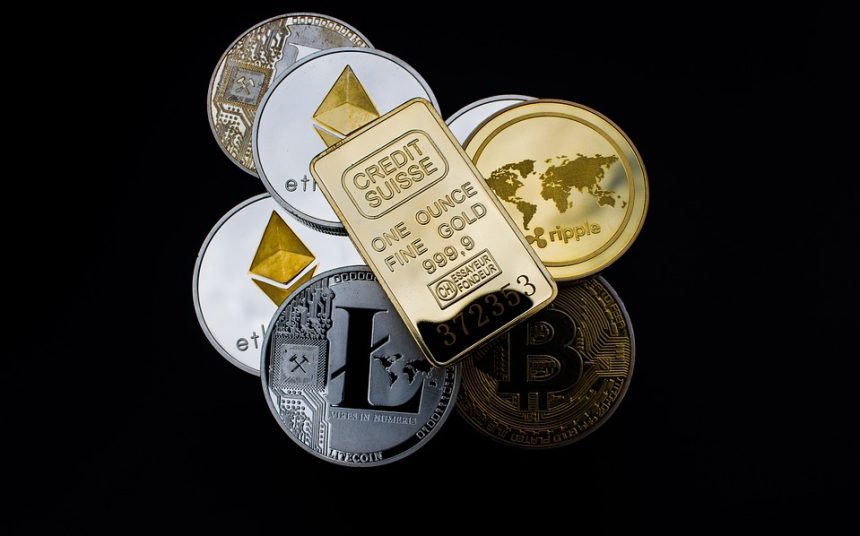In the fast-paced world of cryptocurrencies, altcoins—alternative currencies to Bitcoin—have surged into the limelight, often promising innovation and disruption. With thousands of these digital assets flooding the market, they attract a diverse range of investors and technologists. However, as regulatory frameworks evolve globally, a pressing dilemma has emerged: Should altcoins comply with regulatory requirements, or do they risk falling into chaos?
The Rise of Altcoins: A Double-Edged Sword
Initially created to address the limitations of Bitcoin, altcoins, including Ethereum, Ripple, and Litecoin, offer various functionalities, from smart contracts to faster transaction speeds. Each project carries its own vision, often aiming to solve specific issues in the financial system or beyond. This approach has cultivated a rich ecosystem of innovation and competition.
However, the creation of new altcoins has also paved the way for dubious projects, creating a breeding ground for scams and failures. Investors, eager for the next big opportunity, often find themselves entangled in hype and speculation, leading to potential losses and a shifty market landscape.
The Regulatory Landscape
The regulatory landscape surrounding cryptocurrencies is in constant flux. Governments worldwide are grappling with how to classify and regulate digital assets. The Securities and Exchange Commission (SEC) in the United States, for instance, has categorized certain altcoins as securities, which subjects them to extensive regulations. This classification means that altcoin projects must comply with a myriad of legal requirements, including registration, disclosures, and investor protections.
Countries such as the European Union, China, and India are also moving toward stricter regulations, raising questions about how altcoins can navigate these complex legal waters. This regulatory push aims to protect investors, foster market integrity, and counter illicit activities linked to cryptocurrencies.
The Compliance Conundrum
For many altcoin projects, the thought of compliance is daunting. Regulatory adherence often demands substantial resources, legal expertise, and operational adjustments—elements that many startups struggle to afford. The cost of compliance can deter innovation and slow down development, stifling the very interactivity that defines the cryptocurrency space.
Adhering to regulations can also lead to a loss of decentralization, one of the core ethos of cryptocurrency. For example, projects that implement Know Your Customer (KYC) processes may limit accessibility, thereby marginalizing users who lack access to identification or financial services. This contradiction poses a serious dilemma for projects operating on principles of inclusivity and freedom.
The Chaos of Non-Compliance
On the flip side, choosing to ignore compliance can lead to severe repercussions. Regulatory bodies worldwide are cracking down on non-compliant projects, leading to legal battles, fines, and, in some cases, outright bans. For instance, projects found violating securities laws can face litigation, damaging reputations and leading to significant financial losses.
Moreover, the landscape of trust in blockchain and cryptocurrencies is delicate. Instances of fraud and mismanagement can breed skepticism among potential investors, complicating the relationship between legitimate projects and those engaging in nefarious activities. Chaos ensues when consumers are left uncertain about the legitimacy of their investments in a highly fluid market.
Navigating the Regulatory Maze
Finding a middle ground between compliance and chaos requires careful navigation. Altcoin projects can adopt compliance-oriented strategies to mitigate risks while still retaining their innovative edge. Strategies may include:
-
Engagement with Regulators: Proactive communication with regulatory bodies can lead to better understanding and guidance. Collaborating with regulators allows projects to stay informed about changing legal landscapes and potentially influence policies.
-
Legal Frameworks: Employing legal experts who specialize in cryptocurrency regulations can ensure that projects remain compliant from the outset. This foresight can save time, resources, and legal battles down the road.
-
Community Education: Educating the altcoin community about the importance of regulations can foster a culture of accountability. Investors and developers need to understand that compliance doesn’t sacrifice innovation but can enhance legitimacy and long-term stability.
- Innovative Solutions: Projects that leverage decentralized solutions while ensuring compliance—through mechanisms like decentralized identity verification—can bridge gaps between regulatory requirements and user needs.
Conclusion: A Path Forward
The dilemma of compliance versus chaos is a significant challenge in the evolving landscape of altcoins. As regulatory frameworks continue to develop, altcoin projects must confront the reality that compliance is not merely an obstacle but an opportunity to solidify trust and establish longevity in the market.
Balancing innovation with regulatory adherence is critical for the future of altcoins. The journey isn’t straightforward, but with collaborative strategies and a commitment to both transparency and compliance, the altcoin ecosystem can navigate these turbulent waters, steering clear of chaos and toward a more stabilized and respected position in the financial world.





